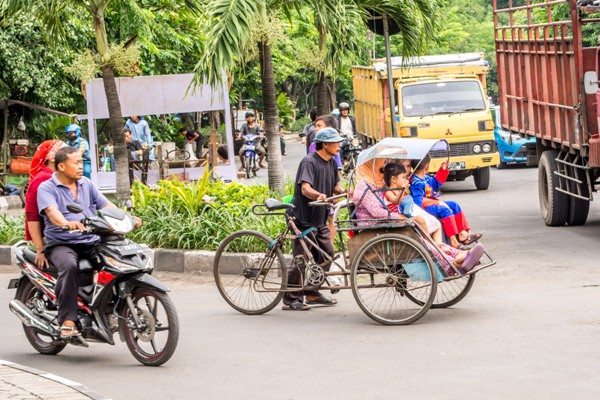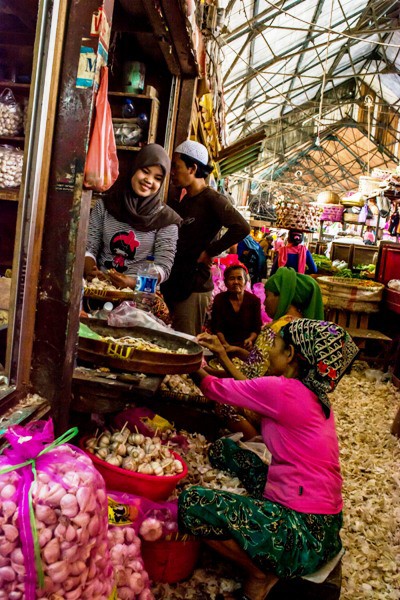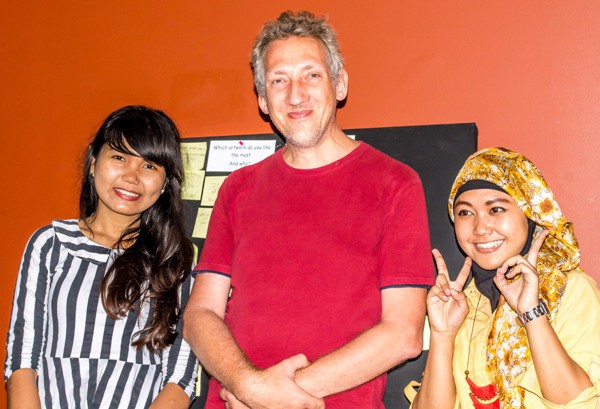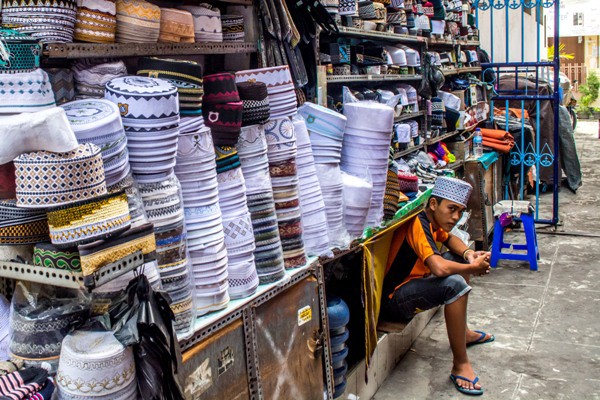
Some cities make a real effort to put on their best face for visitors. And then there are places like Surabaya: gritty, crumbling, and staggeringly chaotic, you’d be hard pushed to find even a local person who would call it beautiful. Few visitors stop to take in its sights such as they are, although thanks to its proximity to Mount Bromo many pass quickly through its airport and train station.
The most prominent tourist attraction (the only one, some would say) is the House of Sampoerna cigarette factory to the north of the city centre. Built on the site of a former orphanage by a Chinese entrepreneur who started life peddling food on 19th-century trains, the factory is still family-run. It now spends a lot of effort and money in building a clean image of the Sampoerna brand as one which supports the local people, rather than one which is killing them slowly with its products. The museum is free to visit and there’s a modest art gallery which is also free. Also free is a city tour in a old-fashioned streetcar, running 3 times a day and taking in a loop of the city’s heritage sites. There’s even a smart air-conditioned cafe in which you’re likely to find more western folk than at any other place in Surabaya.

But the most striking memory of all was the intense curiosity shown in us as rare European visitors not only by the local people, but by the other tourists, most of who came from Indonesia. One after another, folks of all ages would ask us to pose with them for photos – through those who took the opportunity to practise their limited English, we learned that most came from the towns and cities of East Java and were visiting Surabaya for day trips.
One of the more unexpected attractions is the Kapal Submarine beside the Surabaya Mall. This Russian-built vessel was built in the 1950s and spent several years in service of the Indonesian Navy, before being retired and opened as a tourist attraction. Now for around 40p you can wander the full length of the sub, peering at the passing traffic on the road outside through the periscope, as well as crawling awkwardly through the port holes which link the seven compartments.

Once again though, on our visit it was us who were the star attractions. Families asked us to pose with their children, groups of young boys and girls took it in turns to snap us with their smartphones. All the while people stopped, smiled and warmly greeted us.

Surabaya has a rich history as a trading port and the Dutch made it the capital of East Java. Many colonial era buildings remain, although most are in a crumbling state of decay. The Arab Quarter is a maze of alleys reminiscent of the souks of the Middle East, and its crowded alleyways converge on the 13th-century Ampel Mosque, with the shops around the mosque selling a variety of religious paraphernalia.

A short walk away is the Chinatown area, another crumbling mess of market alleys. We strayed off the main road and soon found ourselves in a dark alley heading into a busy market. The noise, the smells and the chaos were intense, and as we walked through we were soon blocked by men carrying barrels of fish and stinking meat. As we stood trapped between several crates a bucket of slop was poured out in front of us, and I was grateful that I’d chosen not to wear my long trousers as a mix of blood and goodness-knows-what covered my ankles and feet.
It would be hard to argue that Surabaya should be an unmissable part of any Indonesian itinerary, but perhaps if you had to try and sell it honestly as a destination, you could do worse than saying: “If you liked Manila…”
Practicalities
If you want to go to Surabaya (and why wouldn’t you after all that I’ve told you?):
Surabaya can be reached by train from Jakarta, Yogyakarta and Banyuwangi (the departure point for the boat to Bali). It also has air connections with Bali, Lombok and other Indonesian airports. Getting around Surabaya is easy. You can use metered taxis or risk your life on a pedicab – both are very cheap. Or you can do as we did and really stand out by walking everywhere.
For a posh hotel you can stay in the colonial era Hotel Majapahit – it’s like Raffles but at a fraction of the price. We stayed at the Hotel Santika Gubeng – it looks like a fairly unremarkable business hotel, but for under £40 a night we had a decent room with free WiFi and one of the best hotel breakfasts I’ve ever encountered.




